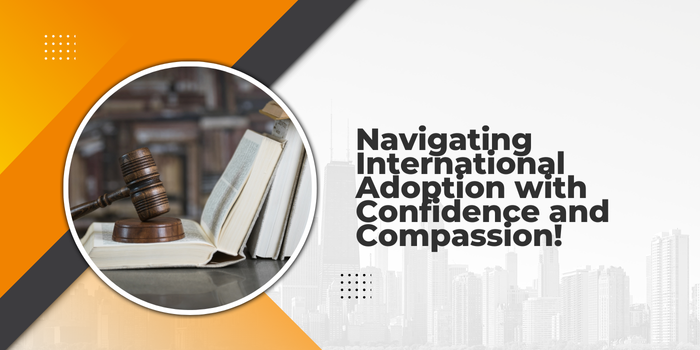For many individuals and couples, the decision to grow their family through adoption is a profound and life-changing experience. While domestic adoption is a common route, some families feel drawn to the idea of adopting a child from another country, opening their hearts and homes to a child in need from a different cultural background. However, navigating the process of international adoption can be complex and daunting without proper guidance. In this comprehensive guide, we’ll explore the steps involved in adopting a child from another country, empowering prospective adoptive parents to embark on this transformative journey with confidence and compassion.
Research and Education:
Before diving into the process of international adoption, take the time to research and educate yourself about the various countries, adoption agencies, and cultural considerations involved. Understand the legal requirements, adoption timelines, and costs associated with adopting from different countries. Consider attending informational sessions, workshops, or support groups to gain insights from other adoptive parents and experts in the field.
Selecting an Adoption Agency:
Choose a reputable adoption agency with experience in facilitating international adoptions. Research agencies thoroughly, considering factors such as accreditation, track record, ethical practices, and support services provided to adoptive families. Schedule consultations with multiple agencies to ask questions, clarify concerns, and assess their suitability for your adoption journey.
Understanding Country-Specific Requirements:
Each country has its own set of adoption laws, procedures, and eligibility criteria that prospective adoptive parents must adhere to. Familiarize yourself with the requirements of the country from which you intend to adopt, including age restrictions, marital status, income thresholds, and any cultural or religious considerations. Ensure that you meet the eligibility criteria and are prepared to fulfill the country’s legal requirements for adoption.
Completing Pre-Adoption Education and Home Study:
Most countries require prospective adoptive parents to undergo pre-adoption education and a home study conducted by a licensed social worker. Participate in pre-adoption training programs to gain insights into adoption-related issues, attachment, parenting techniques, and transracial or transcultural parenting. Complete the home study process, which involves interviews, background checks, and home visits to assess your suitability and readiness to adopt.
Gathering Required Documentation:
Compile all necessary documentation required for the international adoption process, including birth certificates, marriage certificates, medical reports, financial statements, background checks, and reference letters. Ensure that all documents are authentic, up-to-date, and properly notarized or authenticated according to the requirements of the adopting country and relevant authorities.
Navigating the Legal Process:
Work closely with your adoption agency and legal professionals to navigate the legal process of international adoption. This may involve obtaining legal clearance from both the sending and receiving countries, securing necessary visas or travel permits, and complying with international adoption laws and regulations. Be prepared for potential delays, bureaucratic hurdles, and unexpected challenges along the way.
Preparing for Travel and Transition:
As your adoption process nears completion, make preparations for traveling to the child’s country of origin to meet and bring them home. Familiarize yourself with the child’s culture, language, and customs to facilitate a smooth transition and promote bonding and attachment. Pack essential items, such as clothing, toys, and comfort items, to help ease the child’s transition to their new home and environment.
Post-Adoption Support and Services:
After bringing your adopted child home, access post-adoption support and services to assist with the adjustment period and address any challenges that may arise. Seek out support groups, counseling services, and resources for adoptive families to connect with others who understand your journey and provide guidance and encouragement along the way. Continue to nurture your child’s cultural identity and heritage while providing a loving and supportive family environment.
Legalizing the Adoption:
Complete the legal process of finalizing the adoption in your home country, ensuring that all necessary legal requirements are met to establish the child’s legal status as your son or daughter. Obtain an adoption decree or court order from the appropriate authorities, and update your child’s legal documents, such as birth certificates and passports, to reflect their new family status.
Celebrating and Embracing Your New Family:
Finally, celebrate the completion of your adoption journey and embrace the joy and love that your new family member brings into your lives. Cherish the unique bond that you share with your adopted child, and continue to nurture their growth, development, and well-being as they thrive in their new home and family.
Conclusion:
Embarking on the journey of international adoption is a profound and transformative experience that requires careful planning, preparation, and commitment. By understanding the steps involved in the adoption process, selecting a reputable adoption agency, and navigating the legal and cultural considerations with compassion and perseverance, prospective adoptive parents can fulfill their dreams of building a loving and diverse family through adoption. With dedication, patience, and an open heart, you can navigate the complexities of international adoption and welcome a precious child into your home and heart, forever changing both of your lives for the better.



